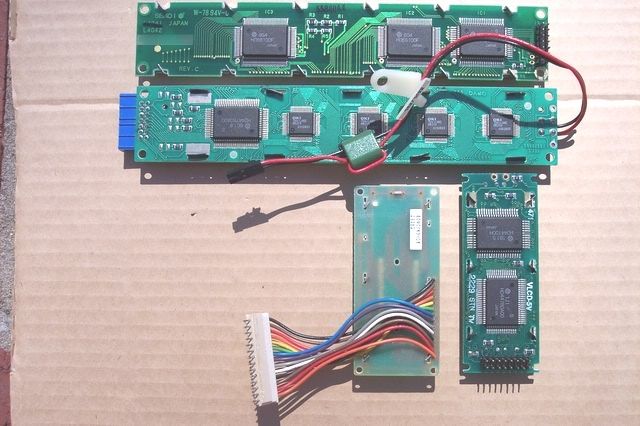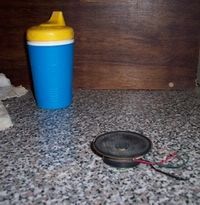Sticky Fox,
Great post!

FWIW- I actually have a 424, and have gotten sort of disgusted by some of MOTU's policies and priorities, by hanging around here too much, so I doubt I'd go with anything else of theirs, unless it was a really cheap eBay deal or something, and I was confident that I could get it to work, despite their Windows support.

I got too excited about seeing the Ultralite guts and hadn't even made it to that paragraph about the screen yet.

Yeah, without seeing behind the ribbon, it looks like one of those things with the 14 pin header and the two BL pins located away from it, but also like the mainboard has the regular 16 pin header (with the two power pins at the end). Where do they go when they hit that first board? Also, is that LCD board squashed into a female header or something on the long vertical board (should be easy as pie)? The inverters, AFAIK, will take the 5v lines and bump them way up externally, before they hit the LCD inputs, so if it passes through any of that junk on the long board, it may have to be run directly to the LCD or something (unless you're sure it's just regular LED lighting). Does sound pretty easy to replace, but the power for the lighting still seems sort of scary, if people are saying it's "dim" and there aren't any contrast adjustments. May be worth trying to figure out what the output lines to the LED inputs are actually doing on the LCD side of the board, as well as the contrast/luminance pins, but I guess you'd get the same output to whatever you swapped in, so it probably couldn't hurt itself. Problem is, it may make a cool looking replacement come out dim just like the original. May be worth connecting a cheap one to see if the lighting's the same, before ordering anything. The low light may be a power precaution, since the UL can run entirely off the host's power.
Here's a handful of regular 44780 compatibles:

The two 40x2's have the 14 pin headers, and the BL lines separate. The one at the bottom left is the same pinning, with a straight row soldered on (you could probably even solder a 16 pin ribbon to those if you had to.
BTW- Something common here uses that 16 pin ribbon. I think it may be the old Mac floppies (beige stuff). 20 pins may even work, if there's space to hang the empty side over on the board (I think PC floppies use the 20).
That screen at the top has the two light connections above the 14 pin holes. It doesn't have a header, but I've soldered them on easily. Those are just "reflective" versions, where the light connections on them don't actually go
anywhere, and I've got a pile of those here. I was interested in your previous mention of light replacement because of them. I've been looking at EL foil and side view LED lighting for them.
That UL mainboard looks like "surface mount city".

I don't see many people messing with op-amps which aren't "thru hole", but some do. That's the same way the Behringer ADA8000 is done, but it's small, modular boards per-channel. People also warn that even though the pinning and requirements may be similar, the circuits are often optimized for whatever was used, so swapping may not get the full benefit of some replacement chips, without proper tweaking. May be worth waiting for one of the "analog veterans" to experiment on one and put up his/her results.
I think S&S Research is actually a MOTU brand or something. It goes way back into the old MIDI interfaces too. I've often wondered if the chips were anything common and/or just custom programmed for them, but it didn't seem like there was any "public" info on it.
Thanks again for the pics. If I open my 424, I'll be sure to return the favor here. It may soon be moved to a rack location with better airflow, so I'd likely do it then.
Take Care,
George
PS- People might want to know the hole spacing on that screen too. Those 16x2's in my picture aren't even the same, but they're close. A
rough check with a caliper here gets: 1.2"(30.6mm) by 2.9"(75mm) for the left one, and 1.15"(29.45mm) by 3.17"(80.5mm) for the one on the right. There usually aren't traces or anything near the corners, so if there's a standard size available, I guess you can carve a little out of the holes on the new LCD, or add a small washer. The protruding "screen" part looks the same on these (1"x2.87" for the outside/.63"x2.5" for the window).

